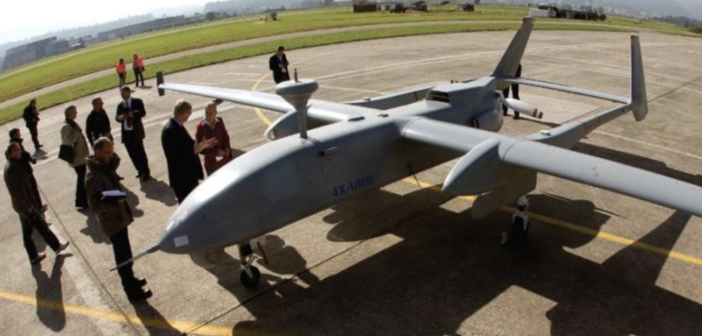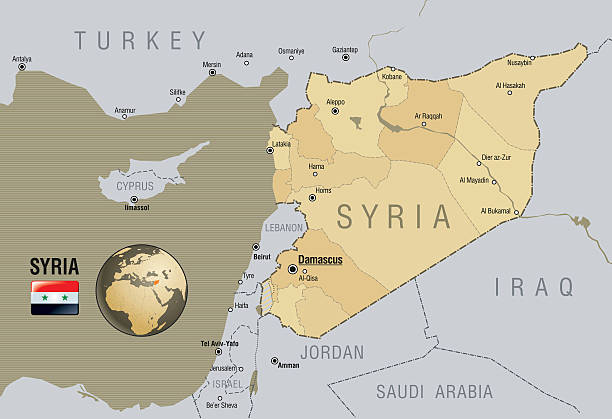
Sine Özkaraşahin, Junior Researcher, EDAM
Key Takeaway
Drones are becoming increasingly available to armed conflicts taking place in different corners of the world. As proved in the Azerbaijani victory in the Karabakh War, unmanned aerial systems (UAS) now provide decisive military capabilities that even tip decades-long deadlocks. In tandem, counter-drone technologies follow suit in international weapons markets and defense technologies research & development agendas. Grasping the industrial trends is crucial for defense economics, as the early acquisition of C-UAS technologies will, inevitably, lead to significant geopolitical consequences.
Perils of Drone Proliferation and Future of the C-UAS Market
In the ever-changing security environment, UAS loom large as ideal assets for a broad range of tasks, as they provide highly flexible operational capabilities, such as gathering intelligence, providing target detection input to land-based fire-support units, and directly engaging in pinpoint strikes[1].
In many cases, drones are more difficult to detect using conventional radar & air defense networks that are inherently optimized for manned aircraft. Currently, several countries are well-aware of the technical merits of UAS and its effects on defense policy. Consequently, this awareness ignited an exponential growth in the counter-drone industry. According to the Center for the Study of the Drone, “over 230 counter-drone commodities were produced by 155 manufacturers, in 33 different countries” in 2018[2]. 67 of these systems had both detection and interdiction capabilities. The same year, a record of 157 investment deals was signed, accounting for a total investment of 1,205 billion dollars[3].
In early 2021, the U.S. military announced a plan to allocate over 400 million dollars to C-UAS research and development[4]. The officials also underlined that they will spend “at least 83 million dollars on C-UAS procurement[5]. Drone detection and disruption applications are expected to be the fastest-growing segments of the industry by 2025[6]. Additionally, ‘commercial verticals’ (supply of the C-UAS technology to various industries with counter-drone needs, such as public venues and critical infrastructure) are expected to hold the largest share in the industry in the near future[7].
With important investments from venture capital firms and governments, the C-UAS sector’s exponential growth came in the last five years, as over 200 systems entered the market within the given timeframe. C-UAS acquisition and development is the second[8] fastest-growing category in the UAS industry[9]. In 2019, the funding for C-UAS continued to rise, growing by 99 percent, reaching approximately 1.05 billion dollars[10].
Several sources claim that the UAS sector will be worth between 4.5[11] and 6.6[12] billion dollars by 2026. A burgeoning compound annual growth rate (CAGR) of almost 30[13]% is expected to accompany this growth. Approximately 2.5 billion dollars[14] of this growth will originate from anti-drone technologies. Strikingly, some research companies optimistically suggest that this volume can even go up to as high as 21.8 billion dollars by 2027[15]. Overall, the highest CAGR increase[16] is expected to take place between 2020 and 2025, in the Asia-Pacific region[17].
A World of Drones: new alliances
North America currently controls almost half of the C-UAS industry, with a market share of over 46[18]%. Three out of the five top companies of the industry are also based in the U.S, which supports the country’s leading position[19]. In America, national private companies are pairing up to develop new counter-drone strategies. The last few years have witnessed significant agreements and public-private collaborations, both domestically and internationally. In October 2020, the U.S. Army signed a 42-million-dollar deal with the Italian company Leonardo DRS[20].
In the Middle East, Israel looms large as the primary leaders in the sector. In 2019, drone detection systems accounted for 17% of Israel’s UAV industry[21]. At the moment, Israeli solutions are being produced with American support and the know-how of tech giants such as Microsoft and AT&T[22]. Israel even exports these technologies abroad, to countries such as the United Kingdom[23].
What Next?
All in all, the counter-drone market is expanding exponentially. Currently, the C-UAS segment receives high investment in the UAV market and within the next four years, the industry is expected to grow more rapidly. All around the world, governments are in a race to perfect their anti-drone abilities using tech-giants’ know-how and skills.
[1] Franklin, Michael. “Unmanned Combat Air Vehicles: Opportunity for the Guided Weapons Industry?” RUSI, September, 2008, https://rusi.org/sites/default/files/200808_op_unmanned_combat_air_vehicles.pdf
[2] Holland, Arthur Michel. “Counter-Drone Systems”, Centre for the Study of the Drone, February 2018, https://dronecenter.bard.edu/files/2018/02/CSD-Counter-Drone-Systems-Report.pdf
[3] Drone Industry Insights, “Drone Investments Report 2020”, March 12, 2020, accessed on January 6, 2021.
[4] “Department of Defense Counter-Unmanned Aircraft Systems”, Congressional Research Service, January 11, 2021, https://fas.org/sgp/crs/weapons/IF11426.pdf
[5] Ibid.
[6] Markets and Markets, “Anti-Drone Market with COVID-19 Impact by Technology (Laser, Kinetic, Electronic), Application (Detection, Detection & Disruption), Vertical (Military & Defense, Homeland Security, Commercial), Platform Type, and Geography – Global Forecast to 2025”, October 2020, https://www.marketsandmarkets.com/Market-Reports/anti-drone-market-177013645.html, accessed on 6 January 2021.
[7] Unmanned Airspace, “Anti-drone market ‘to be worth USD1.5 billion’ by 2023 – new report”, August 2017, https://www.unmannedairspace.info/utm-and-c-uas-market-analysis/anti-drone-market-to-be-worth-usd1-5-billion-by-2023-new-report/
[8] The first category with the highest drone spending is ‘air’ with approximately 6,045 million dollars and ‘counter-drone’ is the category with the second highest spending, with 1,052 million dollars (Gettinger, 2017).
[9] Gettinger, Dan, “Drones in the FY 2018 Defense Budget,” Center for the Study of the Drone, October,
[10] Ibid.
[11] Grand View Research, “Anti-drone market size worth 4.5 billion dollars by 2026, CAGR 29.9%”, May 2019, https://www.grandviewresearch.com/press-release/global-anti-drone-market, accessed on 6 January 2021.
[12] “Global counter-UAS market ‘will be worth USD 6.6 billion by 2024’”, Unmanned Airspace, December 2019, https://www.unmannedairspace.info/latest-news-and-information/global-counter-uas-market-will-be-worth-usd6-6-billion-by-2024/
[13] Ibid.
[14] Research and Markets, “Global Anti-Drone Market to Reach 2.4+ billion dollars by 2025, Featuring Profiles of SRC, Raytheon Technologies, Lockheed Martin and Others”, 27 January 2021. https://www.prnewswire.com/news-releases/global-anti-drone-market-to-reach-2-4-billion-by-2025–featuring-profiles-of-src-raytheon-technologies-lockheed-martin-and-others-301216133.html
[15] Meticulous Research, “Unmanned Aerial Vehicle (UAV) Market Worth 21.8 billion dollars by 2027 – Pre and Post COVID-19 Market Analysis”, June 11 2020, https://www.globenewswire.com/news-release/2020/06/11/2046938/0/en/Unmanned-Aerial-Vehicle-UAV-Market-Worth-21-8-billion-by-2027-Pre-and-Post-COVID-19-Market-Analysis-Report-by-Meticulous-Research.html, accessed on 6 January 2021.
[16] “The anti-drone market was valued at USD 0.6 billion in 2020 and is projected to reach USD 2.4 billion by 2025; it is expected to grow at a CAGR of 32.2% from 2020 to 2025”, Yahoo Finance, 21 October 2020, https://in.finance.yahoo.com/news/anti-drone-market-valued-usd-184100159.html?guccounter=1&guce_referrer=aHR0cHM6Ly93d3cuZ29vZ2xlLmNvbS8&guce_referrer_sig=AQAAAEuv9F7PimtUUls9MXSWsx0zn8UMiN2dnuI-llLDm5V4gGYpS_mWTdRvme0PLgXlLZ9m0Ze4nCJVbbT3NSw6xRiqiM97zA3DyZmkoqbMkknlJ5zBYq-bz5iVsAhWN2zJla8IwXNMvBBF-rfrT_KyMWSBkMKdI7sfaBFZJWvLp7Zu
[17] Markets and Markets, “Anti-Drone Market with COVID-19 Impact by Technology (Laser, Kinetic, Electronic), Application (Detection, Detection & Disruption), Vertical (Military & Defense, Homeland Security, Commercial), Platform Type, and Geography – Global Forecast to 2025”, October 2020, https://www.marketsandmarkets.com/Market-Reports/anti-drone-market-177013645.html, accessed on 6 January 2021.
[18] Market Research Future, “Global Counter UAS Market: Information by Technology”, September 2019, https://www.marketresearchfuture.com/reports/counter-uas-market-7430
[19] These companies are SRC, Raytheon Technologies Group and Lockheed Martin. The fourth and fifth companies are Italy-based Leonardo S.P.A and the French company Thales, respectively. Retrieved from; https://www.marketsandmarkets.com/Market-Reports/anti-drone-market-177013645.html#:~:text=The%20anti%2Ddrone%20market%20was,32.2%25%20from%202020%20to%202025. Due to their growing shares in the market, they can be regarded as beneficial for C-UAS investors.
[20] National Defense, “Industry Eyes Opportunities in Counter-Drone Market”, June 6 2017, https://www.nationaldefensemagazine.org/articles/2017/11/6/industry-eyes-opportunities-in-counter-drone-market, accessed on January 6, 2021.
[21] U.S. News, “Israel’s Anti-Drone Industry Takes Off”, August 30 2019, https://www.usnews.com/news/best-countries/articles/2019-08-30/israels-anti-drone-industry-takes-off, accessed on 6 January 2021.
[22] U.S. News, “Israel’s Anti-Drone Industry Takes Off”, August 30 2019, https://www.usnews.com/news/best-countries/articles/2019-08-30/israels-anti-drone-industry-takes-off, accessed on 6 January 2021.
[23] U.S. News, “Israel’s Anti-Drone Industry Takes Off”, August 30 2019, https://www.usnews.com/news/best-countries/articles/2019-08-30/israels-anti-drone-industry-takes-off, accessed on 6 January 2021.









